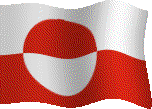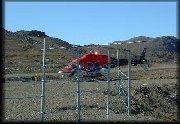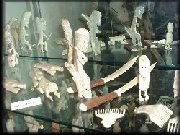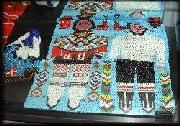 East
Greenland: Further
Thoughts
East
Greenland: Further
Thoughtsa short trip to Greenland and Iceland
Tan Wee Cheng, Singapore/London East
Greenland: Further
Thoughts
East
Greenland: Further
Thoughts
This is the first half of an email sent after I have returned from my trip.
Sent: 17 August 2001
Further thoughts about Greenland and Iceland
It’s close to a week since I have returned from my North Atlantic trip.
It is on the whole an enjoyable and remarkable one.
The nature and landscapes are dramatic but I wouldn't regard the trip as
among my top 5, for I tend to be captivated by places with a stronger sense of
ethnic diversity or exoticness and Iceland clearly doesn't have that. Greenland is kind of exotic in that sense but it's just too
windy and cold for a son of the tropics like me to enjoy it properly.
I felt so worn out everyday because of the cold, although some of my
experiences there, for example, the seal hunt, were just so extraordinary
compared to my other trips. It is something I would remember for a long time.
There are many aspects of this trip that are thought-provoking, and I
would share them with you. They
relate to 1) Seal Hunting, 2) The economics of living in a harsh land like
Greenland, 3) The economics of running a small nation like Iceland
Seal Hunting:
Strange enough, my email on the seal hunt is one that has provoked quite a number of responses from my normal quiet readership. Most of those who wrote thought that it was an interesting experience, but there were also a few who said seal hunting was cruel and should be banned. One other strange thing is that many people even used terms like seal clubbing or mass cruelty, even though 1) there was no mass clubbing of seals involved or described in the article (amazing how people see things that were not there), 2) there was no mass killing because the hunter, who is generally alone, has to search for small numbers of individual seals in a very small boat (merely 2 meters long) through dangerous icebergs in hostile weather conditions, 3) the use of the harpoon may sound cruel but it is the most humane way of killing the animal after it is injured by the bullet wound. It finishes the animal before it suffers excessively from the wound.
 |
 |
 |
| Helicopter, the most important mode of transport in Greenland. | Expensive Inuit carvings | Textile: Greenland costume |
It is easy for people sitting in their comfortable armchair to cry for
animal rights but to the Eastern Greenlandic Inuit who lives in a harsh land
(85% covered by permanent ice) with no agriculture and animal farming are
possible, the hunting of seals, which are not endangered animals, is one of
their very few means of subsistence survival.
There are more than 5 million seals in Greenland and 70,000 are taken
every year. The selling of the skin
to the Government provides some dignity and spare cash for a people who would
otherwise sit at home to receive unemployment benefits that may help to send
children to school, repairs for their houses (no, they don't stay in igloos) and
thick clothing for winter. Seal
skin export used to be the largest source of export income for Greenland but
this has collapsed since a US ban was imposed in 1972.
Unemployment is prevalent and I see many people sitting around without
anything to do. This has left the
Inuit people susceptible to alcoholism, domestic violence and suicide.
Alcohol consumption per capita is double that of Denmark, and suicides
and homicide account for an amazing 11% and 3% of all deaths respectively.
On a macro perspective, the issue of seal hunting and social problems in
Greenland also point to another interesting question: Can harsh environment like
Greenland support a viable economy ?
Greenland:
This is a country (or rather, an autonomous state within the Kingdom of
Denmark) with 56,000 people spread across an island the size of the European
Union. Most of the country is
covered with permanent ice and apart from 14,000 people living in Nuuk
(previously known as Godthab), the capital, the rest of the population lives in
60 odd towns and villages in the small strips of non ice-covered land along the
coast. Only 4,000 people live in
the remote eastern half of the island that is cut off by ice for 9 months in a
year.
Seal skin products, primarily by-products of the Inuit subsistence
hunting, used to be the largest source of export income but that had long
collapsed (together with tanneries and skin processing factories).
60% of Greenland’s GDP comprise of direct subsidies from Denmark
(US$410m) and the largest (85%) source of export earnings is that of fish and
seafood products. The latter are
mainly in the form of licensing fees earned from foreign fishing fleets,
although some of these earnings are made by the Royal Greenland Company,
Greenland’s largest company, also owned by the Greenland Home Rule Government.
There is some mining (which is actively encouraged by the Government) but they
are hardly significant. On top of
that, 20% of the population are not born in Greenland, i.e., mostly Danish who
work in branches of the civil service, education and various technical or
professional positions. As such, a
relatively small portion of the GDP relate to economic activity that involves
the indigenous Greenlander. About
two-third of those employed work in the civil service.
If you are cynical, you can say that the bulk of the employed
Greenlanders work to distribute Danish subsidies to the population.
This is hardly surprising, as this is a land hardly conducive to any form
of economic activity or human habitation.
Agriculture and animal farming is hardly possible given the climate and
natural environment. Industry is
out due to the small population (try putting out an advert for 2,000 electronics
factory positions in a country where the capital has only 14,000 people) and
high transportation costs (the port is frozen today and will be for the next 6
months – can we ship the semi-conductor chip in summer time?) arising from
weather and remoteness. Mining has
been actively encouraged by quantities found so far has been small or simply
uneconomical considering extraction costs (try digging for gold in permafrost!
They can’t even bury dead bodies in winter.) and remoteness.
Even retailing can be difficult here – how do you supply goods to
56,000 people who live across a country the size of western Europe ? The cost of doing so must be extraordinarily high, just
considering transportation costs. Indeed,
there is only one supermarket chain, and it’s state-owned. For the goods to be
affordable (at prices slightly higher than in Europe), even the goods in the
chain are subsidized.
Before the Danish came, the Inuits live by just hunting seals, polar bears and whales. They probably die young with disease and lack of nutrition. Now, they live till 68 years old with the benefit of modern health care, and acquired a more varied diet which include imported vegetable, pork, beef, lamb, cheese, bread and all the things that we find in the supermarket. All of these have to be imported, and little of these can be supported by the fragile environment and scarce natural resources they live in. Hunting of seals and granting of fishing licenses, even in the best years, can hardly support an economy that has to pay for all these modern amenities and new necessities. As such the Danish welfare state steps in and provides the cash gap. That’s why many are unemployed and live by collecting unemployment benefits, and suffering from the accompanying loss of morale and depression. As I have mentioned earlier, alcoholism has become a common abuse and people die from suicides and alcohol-related disease.
There is no easy solution. Tourism
may bring additional income – this has been increasing over the years.
However, the number of tourists remains small.
The lack of flights and high cost remain obstacles to tourism
development. The former is a chicken and egg story – if there are few
flights, tickets are expensive and tourists are deterred from coming.
But if there are few tourists, few airlines have the incentive to fly
there. Maybe Greenland can learn
from Iceland (which has succeeded in diverting America-to-Europe air traffic to
stopover in Iceland and that spark off Icelandic tourism industry), but again
that might be an exceptional case and difficult to emulate.
A potential bright spot may well be America’s new star wars plan, which
may mean redeployment of old US outer defense radar, air and missile bases in
Greenland. This may well provide
employment and even infrastructure development.
I suspect all these point to one main point – given the harsh environment, Greenland simply cannot support its current population size. If Denmark decides one day to abandon Greenland and to stop all subsidies, most of the population, who in any case have Danish citizenship, would choose to emigrate to Denmark. It would be a sad thing. A destruction of an ancient lifestyle, which in any case have been supported by artificial non-market forces for many years.
The 2nd half of this email, which relates to Iceland, is found here.
Iceland: Reykjavik: Hunting for Huge Penises & Having a Puffin Party
Back to Greenland is Ice and Iceland is Green Homepage
Click here to send your comments to Tan Wee Cheng, Singapore
Click here to visit the author's homepage, Nomadic Tales